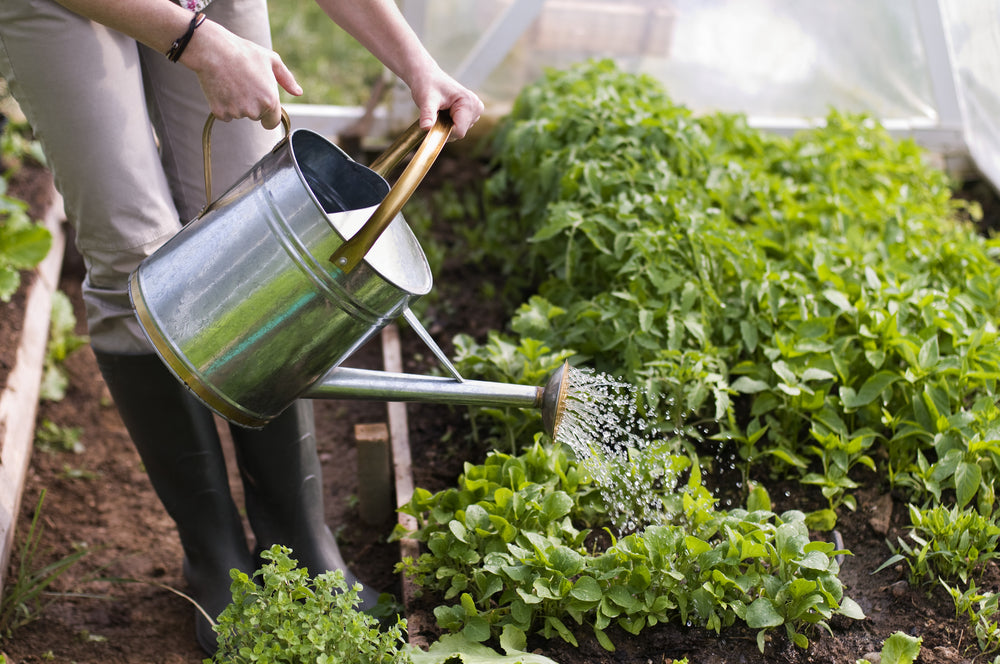Outdoor Summer Watering
What Affects the Watering Needs of Your Outdoor Plants?
Mother Nature will not always disperse her raindrops on your plants, so we need to supplement them with love and water! But first, let's go over some points to consider that affect the watering needs of your Lively Root outdoor plants. In the meantime, get a big glass of water when reading this and give a cheer to your plants!
Check Sun Exposure
Sun exposure will affect how much water your Lively Root plant needs. We know that the giant alocasias and colocasia need direct, full sun to thrive, but they also like a lot of water. If your plant is on a southern or western exposure, the heat is usually more intense. Depending on the number of hours your plant is exposed to the sun will determine how fast the soil dries. Keep your plants monitored twice or three times a week on sweltering hot weeks to ensure they're not getting too thirsty.
Wind
If your plant is near an AC unit or it's on a mountain ridge getting a frequent amount of wind, the flow of air around the plant (just like an overhead fan in your house) can dry the soil or desiccate the plant. Keep this in mind when choosing the right place for your outdoor plant. Move it out of these conditions if it's in an outdoor container.
Types of Pots
If you're planting outdoor Lively Root plants in container plantings, determine the amount of water it will need regularly. If your plant likes desert-like conditions, make sure to use a good draining soil mix like cactus, palm, and succulent mix for those plants. Using a porous pot with good air circulation will also help the soil not retain too much water for too long. On the flip side, if your plant likes more moisture, then try using a plastic or ceramic or glazed pot that can retain the moisture longer, so you're not working as hard to keep it watered enough.
Drainage
We will always repeat this mantra, "Lively Root's plants need drainage." When planting outdoors, add soil amendments and break up the native soil for better drainage. In some parts of the country, clay soil is hard to penetrate and is so compact it's hard to release the minerals and nutrients the plant needs, so we have to amend, amend, and amend some more! Compost is an excellent source to mix into the native soil if you have issues with your soil.
Temperature
Just like the heat on a stove when boiling water, the soil's temps will dry out soil faster, the warmer it is. The heat helps to evaporate the moisture faster, thus making your plants thirsty faster.
Soil Type
As we mentioned before, soil type can give an advantage or disadvantage to your plant. To give your plant the optimum conditions, take into account the soil type. Clay soils tend to hold the moisture longer and be putty thick and not drain well. It's also hard for the nutrients to let loose in the soil and get to the roots. Water tends not to disperse fast enough or penetrate deep down and can roll off the surface quickly on a slope, not giving time to penetrate the roots. If you're experiencing sandy soil and it drains out too fast, garden soils may need to be an additional supplement when planting.
Watering Needs & Growth
Each plant will require its own set of watering needs to maintain vigor and growth. Check your plant care cards for instructions and provide them accordingly. Don't think that every plant needs to be watered the same. Some like to dry out between waterings, like Lively Root's Ponytail Palm, where the Calathia likes its soil to be kept consistently moist.
Did you realize all these things play a factor in your plants' watering needs? It's something to consider, right?! If you're having trouble scheduling your Lively Root plant's watering needs, examine each of these factors to narrow it down and make adjustments as needed!
If you want to learn more about watering when you first plant in the ground outside, follow our watering series here.
















Leave a comment